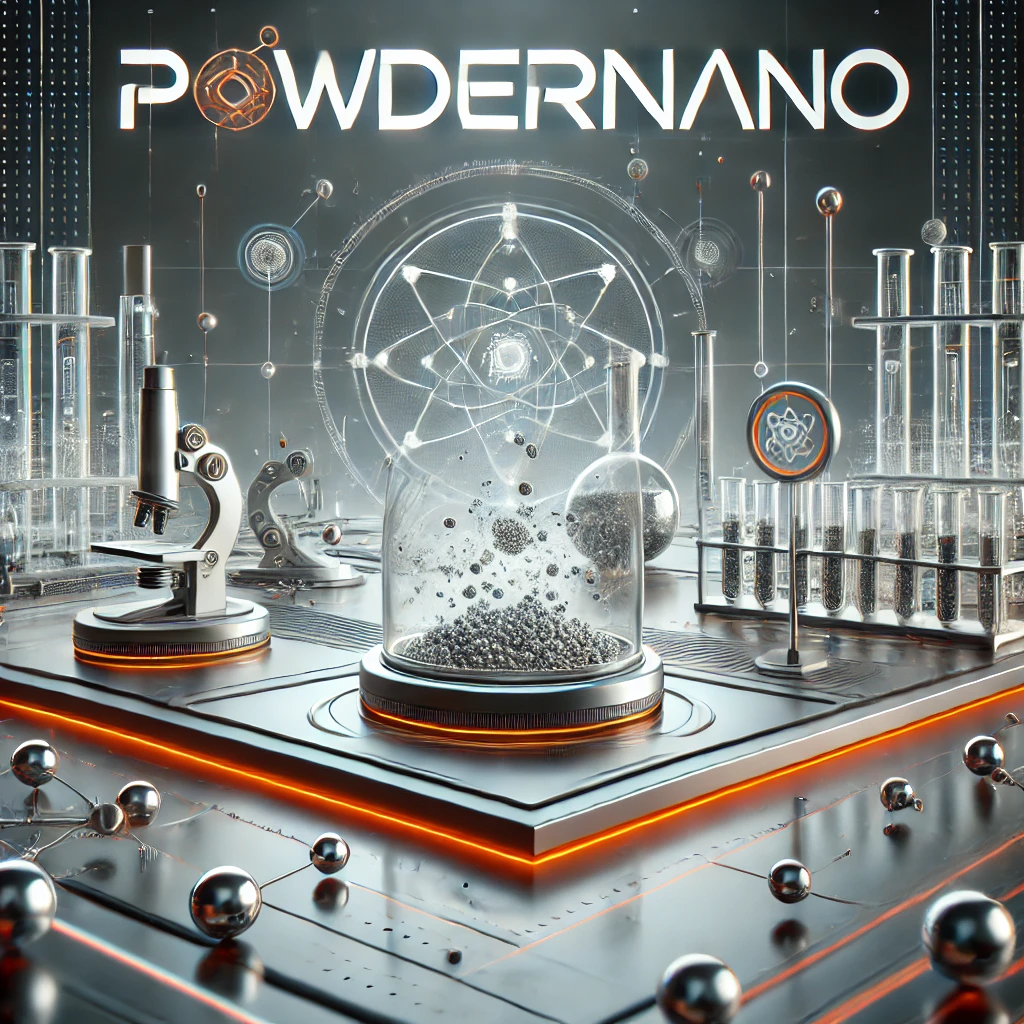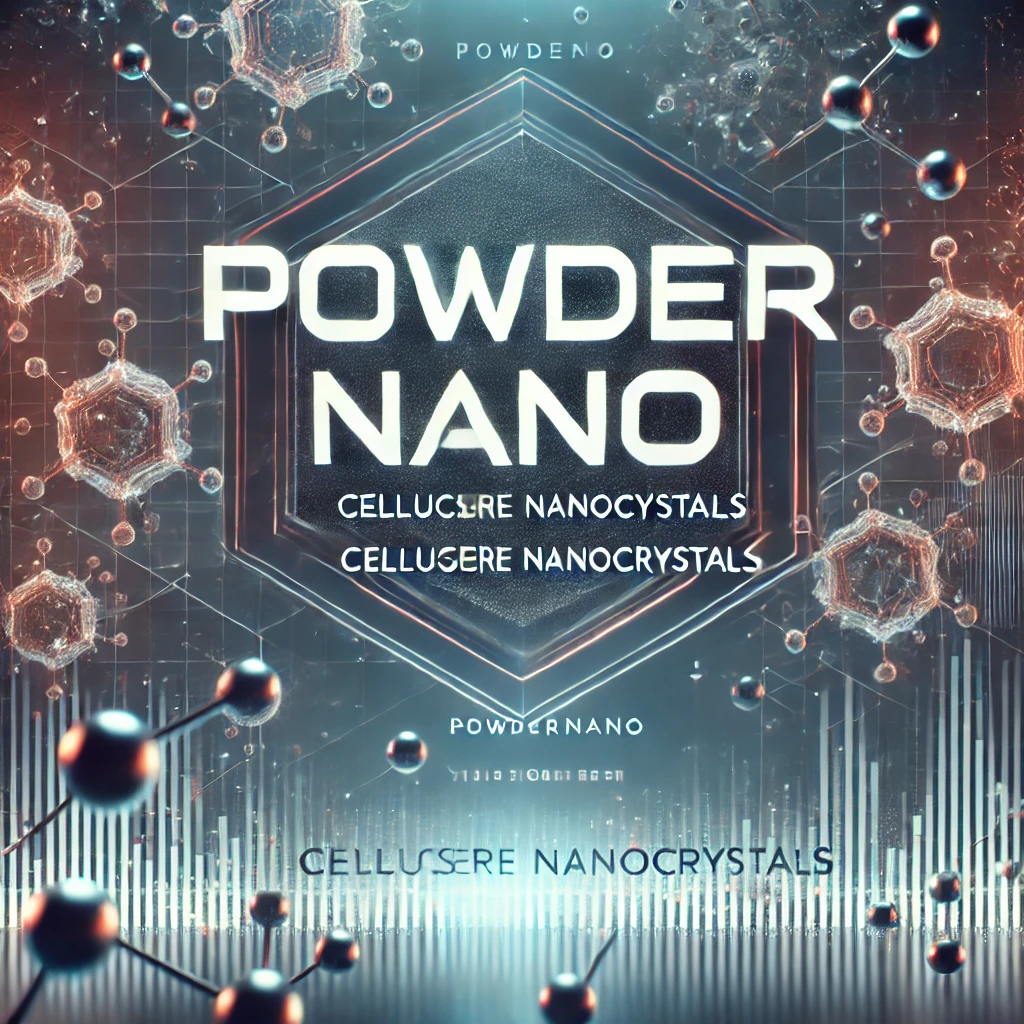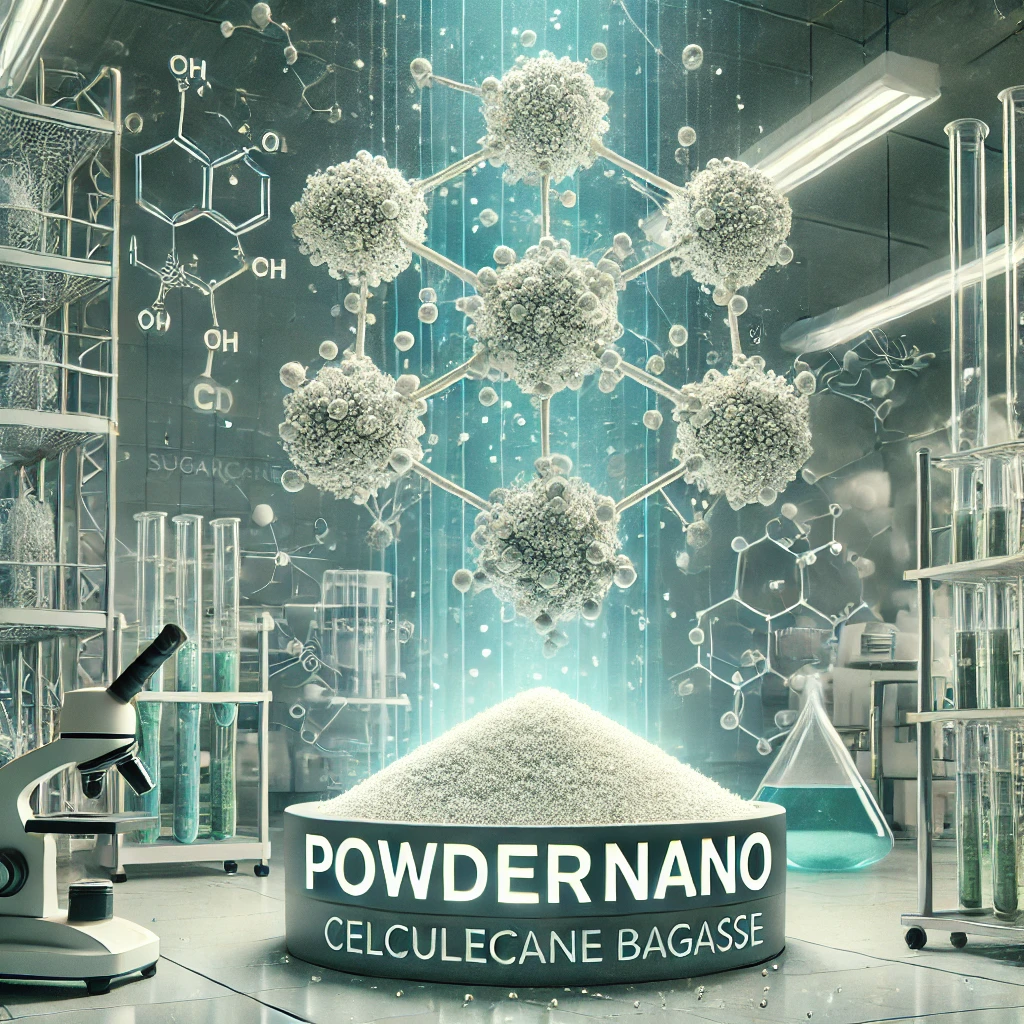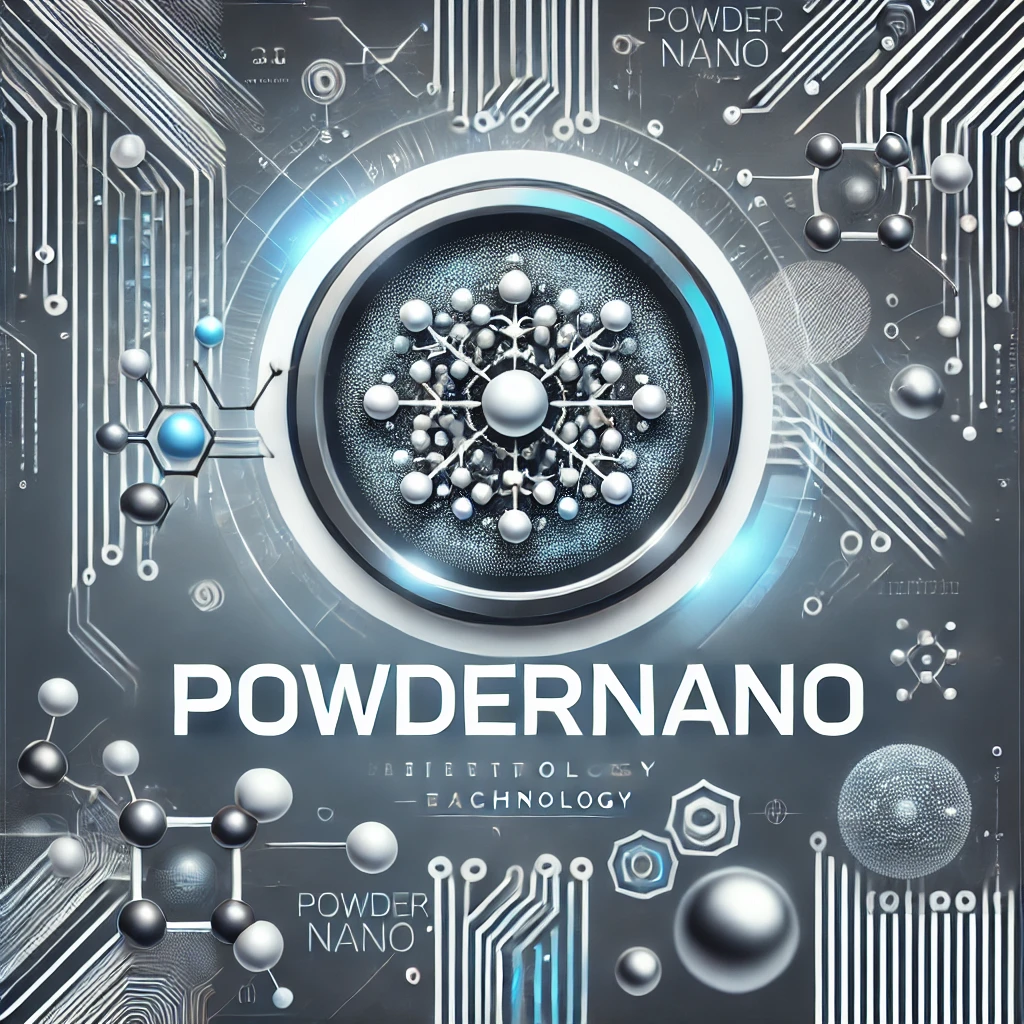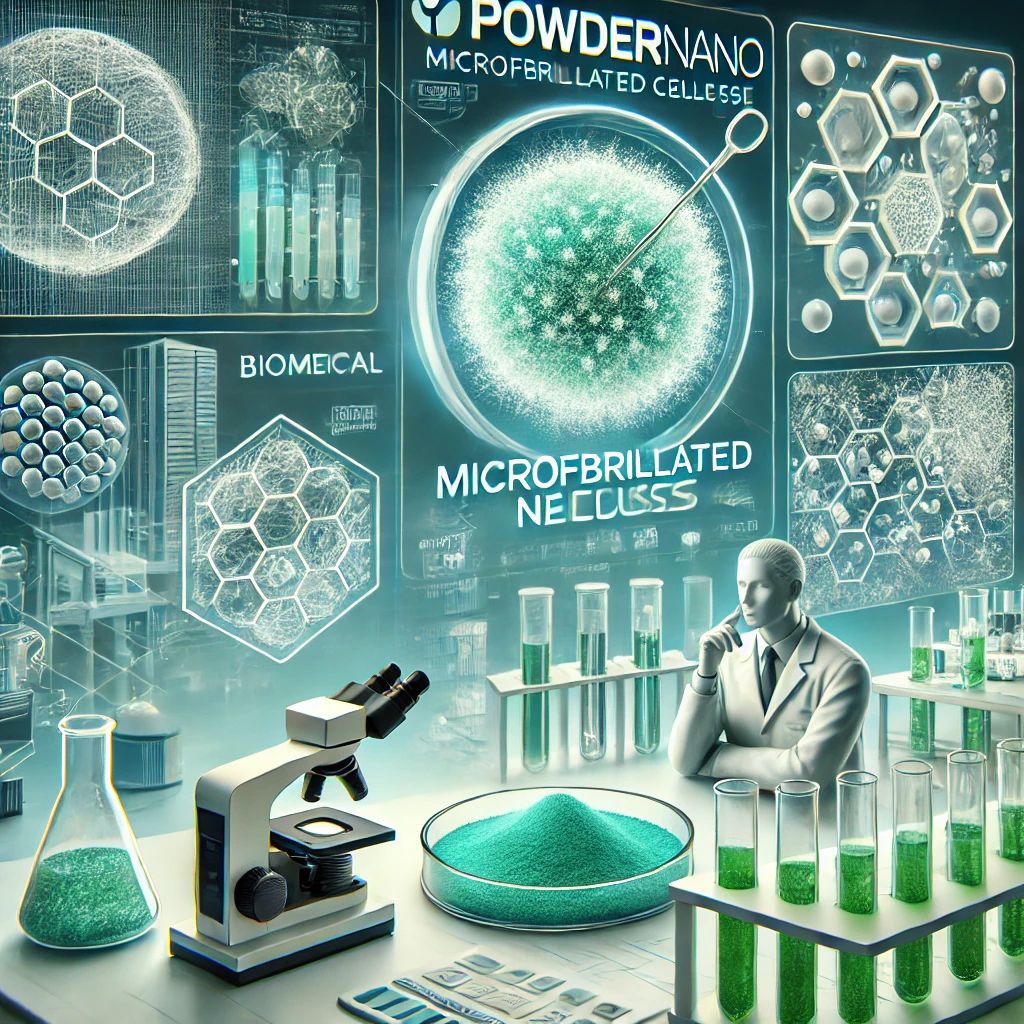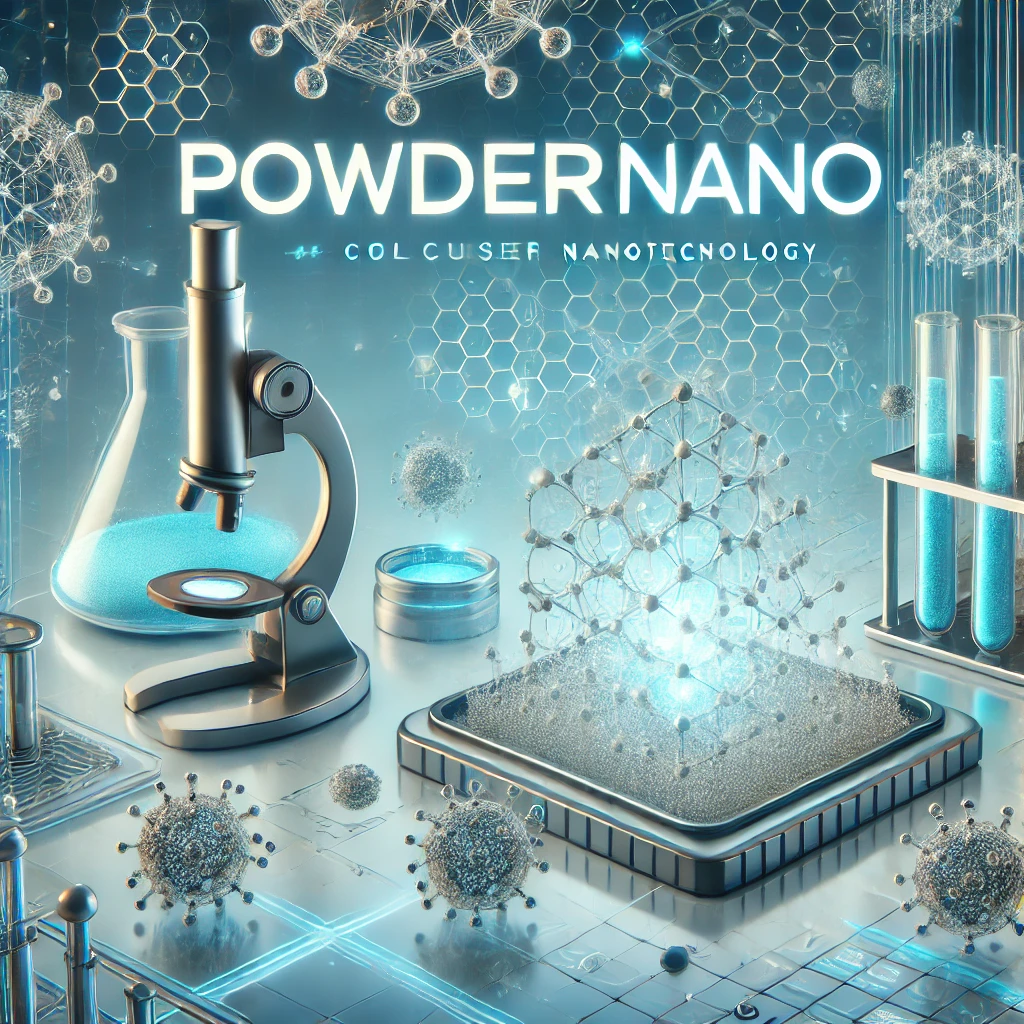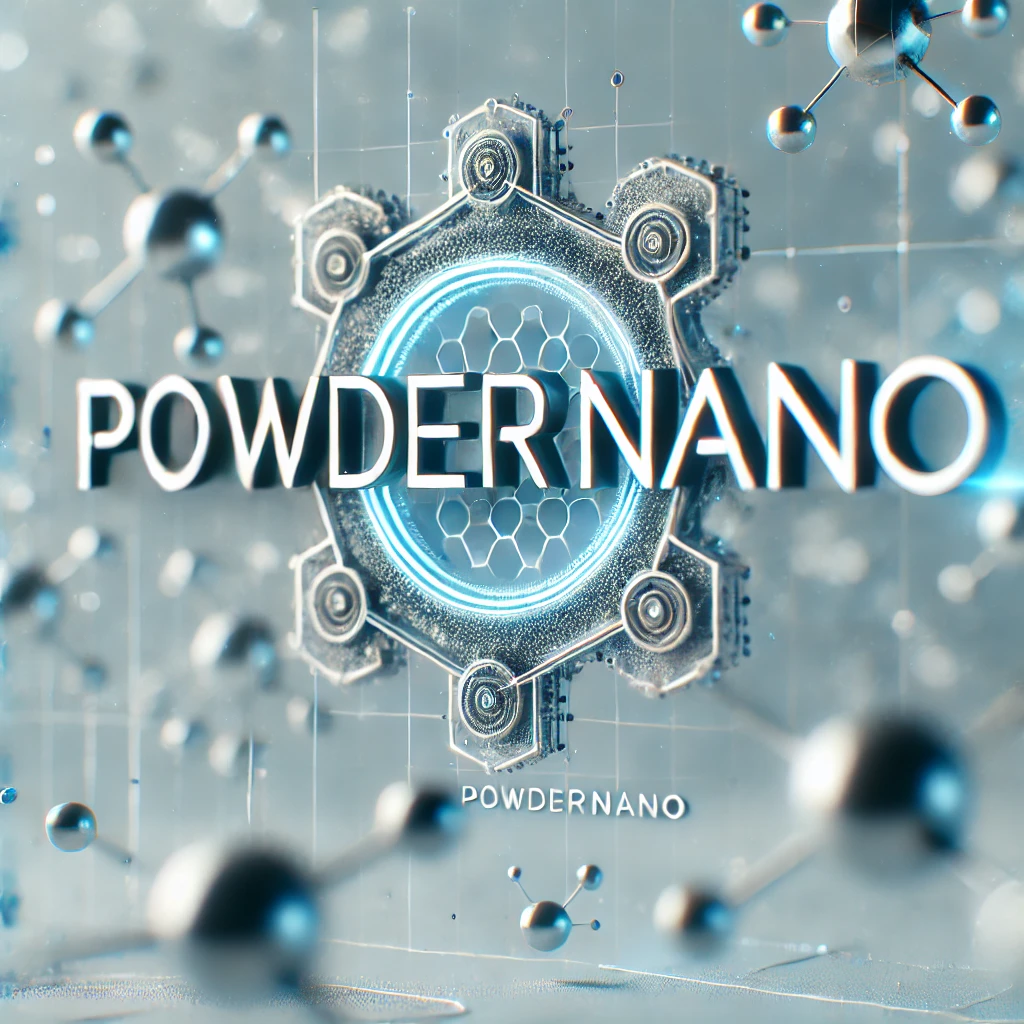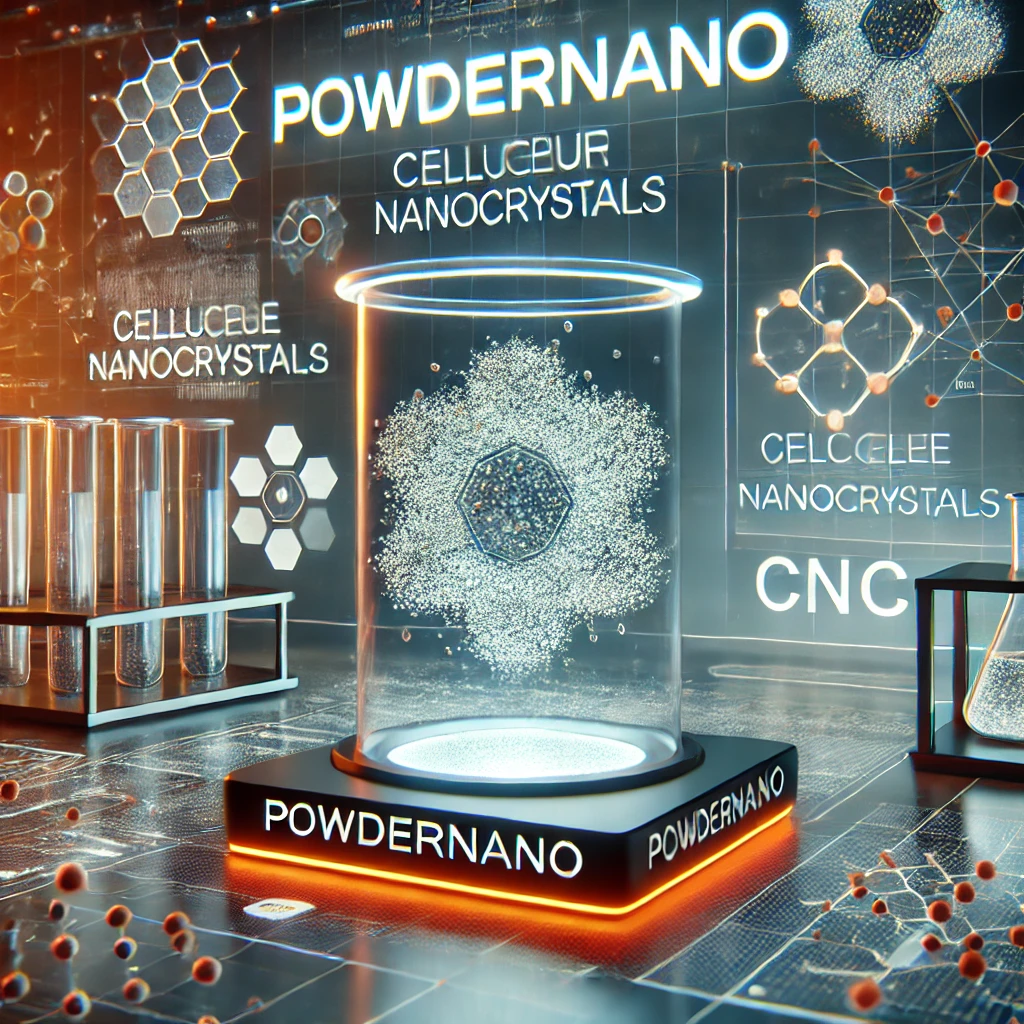Introduction
As global industries move towards sustainability, finding eco-friendly alternatives to fossil fuel-based materials has become a priority. One of the most promising advancements in green materials is Cellulose Nanocrystals (CNCs)—high-strength, renewable, biodegradable nanomaterials derived from agricultural and forestry biomass. With their impressive mechanical, thermal, and chemical properties, CNCs are revolutionizing industries from biomedicine and food packaging to electronics and wastewater treatment. At Powdernano, we focus on cutting-edge nanomaterial solutions, including CNCs, to drive sustainability in modern applications.
What Are Cellulose Nanocrystals (CNCs)?
CNCs are nanoscale rod-like structures extracted from biomass sources such as wood, agricultural residues, and plant fibers. These materials exhibit high crystallinity, superior tensile strength, large surface area, and excellent thermal stability. By leveraging CNCs, industries can develop stronger, lighter, and more environmentally friendly products, reducing reliance on petroleum-based plastics and non-renewable resources.
Biomass Sources for CNC Production
Agricultural and forestry residues, often regarded as waste, serve as abundant sources for CNC extraction. Key feedstocks include:
- Crop residues (corn stover, wheat straw, rice husk, sunflower stalks)
- Woody biomass (pine, eucalyptus, poplar)
- Fruit waste (banana pseudostems, apple pomace, coconut husk)
- Grasses and other plant materials
These materials are rich in cellulose, hemicellulose, and lignin, with cellulose content directly impacting CNC yield and quality.
CNC Synthesis Methods
The production of CNCs involves multiple processing steps, including biomass pretreatment, delignification, bleaching, and hydrolysis. Different hydrolysis methods yield CNCs with distinct properties:
- Acid Hydrolysis: The most common method, utilizing sulfuric, hydrochloric, or phosphoric acid to break down cellulose into nanocrystals.
- Enzymatic Hydrolysis: A sustainable, environmentally friendly approach that uses cellulase enzymes for CNC extraction.
- Ionic Liquid Treatment: A novel technique employing recyclable, non-toxic solvents to dissolve biomass selectively.
- Solid Acid Hydrolysis: An alternative that minimizes corrosion and chemical waste, improving CNC purity and yield.
Each method has advantages and trade-offs regarding CNC quality, production efficiency, and scalability.
Properties of CNCs
The high-performance properties of CNCs make them ideal for a wide range of industrial applications. CNCs exhibit:
- Superior tensile strength (~7500 MPa)
- High crystallinity (>70%) for structural integrity
- Large surface area (~150 m²/g) for functionalization
- Biodegradability and renewability, reducing environmental impact
- Thermal stability for high-temperature applications
Industrial Applications of CNCs
The unique properties of CNCs enable their integration into various industries:
- Wastewater Treatment
CNCs effectively adsorb heavy metals and organic pollutants due to their high surface area and hydroxyl functional groups. They are used in:
- Membranes for water filtration
- Heavy metal adsorption systems
- Oil spill remediation technologies
- Food Packaging and Freshness Monitoring
CNC-based biodegradable films offer improved mechanical strength, moisture resistance, and oxygen barrier properties. Key applications include:
- Edible coatings for perishable foods
- Antimicrobial films that extend shelf life
- Smart packaging that changes color to indicate food freshness
- Polymer Nanocomposites
CNCs enhance the performance of biopolymers such as polylactic acid (PLA) and polyvinyl alcohol (PVA) by improving mechanical strength, flexibility, and biodegradability. This makes them suitable for:
- Biodegradable plastics
- Lightweight automotive components
- 3D printing materials
- Biomedical and Pharmaceutical Applications
CNCs are non-toxic and biocompatible, making them ideal for:
- Drug delivery systems
- Wound dressings and hemostatic agents
- Tissue engineering scaffolds
- Electronics and Energy Storage
CNCs contribute to next-generation flexible electronics, sensors, and supercapacitors. Their high surface area improves conductivity and ion exchange in:
- Batteries and fuel cells
- Flexible, lightweight electronic devices
- Wearable biosensors
- Paints and Coatings
Incorporating CNCs into paints and coatings enhances durability, mechanical strength, and resistance to UV degradation. CNC-based coatings are used for:
- Eco-friendly paints
- Edible food coatings
- Protective industrial finishes
The Future of CNCs and Sustainable Materials
Despite their vast potential, CNC commercialization faces challenges such as high production costs, scalability limitations, and environmental concerns related to chemical usage. To address these issues, future research should focus on:
- Developing cost-effective, large-scale CNC production methods
- Enhancing CNC functionalization for advanced applications
- Reducing chemical waste and improving recyclability
- Exploring CNC-based solutions for energy storage and biofuels
Powdernano: Pioneering CNC Innovation
At Powdernano, we are committed to advancing nanomaterial solutions for a greener future. Our expertise in nano powders and CNC production allows us to offer high-quality, sustainable nanomaterials tailored for diverse industrial applications. Whether you’re looking for customized CNC solutions, eco-friendly polymer additives, or innovative nanotechnology materials, Powdernano is your trusted partner.
Conclusion
CNCs represent a transformative material for industries seeking sustainable, high-performance alternatives. By harnessing agricultural and forestry biomass, CNCs reduce waste, minimize environmental impact, and drive innovation in bioplastics, biomedicine, packaging, and electronics.
With the growing emphasis on green technologies and circular economy principles, CNCs will play a pivotal role in shaping the future of sustainable materials. As industry leaders like Powdernano continue to develop advanced CNC solutions, we are moving closer to a world where biodegradable, high-performance materials replace traditional plastics and fossil-based products.
Join us at Powdernano in embracing the next generation of eco-friendly nanomaterials and leading the way toward a cleaner, greener, and more sustainable future.
https://powdernano.com/product/cellulose-nanocrystal-nanocrystalline-cellulosecnc/
